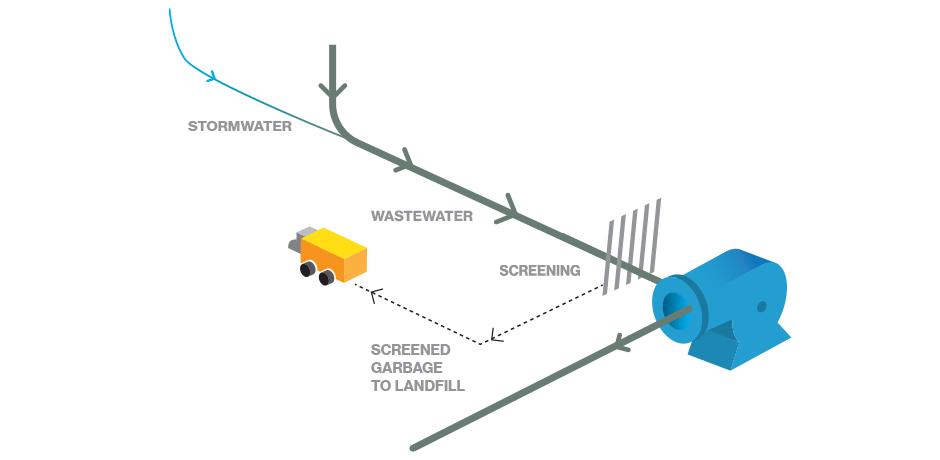Key Challenges in Urban Waste Water Treatment Strategies
Strategic Approaches to Boost Drainage Therapy Performance and Reduce Ecological Impact
In the world of waste water therapy, the pursuit for boosted effectiveness and decreased environmental effect is a continuous obstacle that requires strategic options. The assimilation of sophisticated therapy innovations, energy-efficient processes, source recovery methods, boosted nutrient removal techniques, and wise surveillance and control systems represents a complex framework for resolving these pressing issues.
Advanced Therapy Technologies
Innovative membrane layer purification systems have revolutionized advanced wastewater treatment processes, considerably boosting the removal of pollutants. These ingenious systems operate by compeling water via a semi-permeable membrane layer, efficiently separating pollutants from the water stream. The membrane's microscopic pores trap toxins such as germs, infections, and put on hold solids, allowing only cleansed water to pass through. This innovation has actually confirmed to be extremely effective in getting rid of a large range of contaminants, consisting of drugs, hefty metals, and natural substances, which are frequently testing to remove through conventional therapy techniques.
In addition, membrane purification systems provide countless advantages over traditional therapy methods. They call for less space, generate higher-quality effluent, and are extra immune to changes in influent water top quality. In addition, these systems are extremely flexible and can be easily integrated right into existing therapy plants or utilized as standalone units for decentralized applications. As the need for tidy water proceeds to rise, the adoption of innovative membrane layer filtering innovations is vital to ensure lasting and efficient wastewater therapy techniques.
Energy-Efficient Processes
The integration of energy-efficient processes in wastewater therapy systems is essential for maximizing source usage and lowering functional costs. One crucial strategy to enhancing power performance in wastewater treatment is the usage of innovative aeration systems, such as fine bubble diffusers or surface aerators, which can boost oxygen transfer performance and decrease power intake.
Moreover, maximizing process control and automation with making use of innovative sensing units and keeping track of systems can boost total energy performance by changing procedures in real-time based on real demand and conditions. Applying power audits and on a regular basis monitoring energy performance indications are essential practices to identify areas for improvement and track energy-saving initiatives effectively. Overall, the adoption of energy-efficient procedures in wastewater therapy not just benefits the environment but likewise adds to long-term expense savings and functional sustainability.
Source Recuperation Approaches
With a focus on optimizing source application and sustainability in wastewater therapy systems, the application of resource recovery strategies becomes an essential element in improving operational effectiveness. Source recuperation approaches in wastewater therapy include the recognition and removal of useful sources from the waste stream, consequently turning what was when thought about waste right into a useful property. By applying source recovery techniques such as nutrient elimination and recuperation, energy generation from raw material, and the production of browse around this site multiple-use water, wastewater therapy plants can decrease environmental effect while taking full advantage of effectiveness.

Boosted Nutrient Elimination Techniques
Applying sophisticated nutrient elimination strategies is important for maximizing the effectiveness of wastewater treatment systems. One of the vital methods used for boosted nutrient removal is the process of biological nutrient removal (BNR), which includes the removal of nitrogen and phosphorus with biological procedures.

In addition to BNR, advanced treatment approaches such as membrane bioreactors (MBRs) and created marshes can additionally be employed to enhance nutrient removal performance. By including these sophisticated nutrient removal strategies into wastewater therapy municipalities, systems and markets can properly reduce nutrient contamination and shield the setting.
Smart Surveillance and Control Systems
Making use of cutting-edge technology, the combination of clever tracking and control systems transforms the operational efficiency of wastewater therapy facilities. These systems include advanced sensing units and information analytics to continuously monitor key specifications such as pH levels, turbidity, dissolved oxygen, and circulation rates in real-time. By accumulating and examining this information, operators can acquire useful insights into the efficiency of the therapy procedures, allowing positive changes to optimize treatment efficiency.
Smart monitoring and control systems likewise support remote surveillance capacities, permitting drivers to access real-time data and control features from useful reference off-site locations. This remote access boosts operational versatility and responsiveness, making it possible for quick interventions in instance of system malfunctions or variations in influent top quality. Moreover, the predictive upkeep capabilities of these systems help prevent devices failings and minimize downtime, ultimately enhancing the overall integrity of wastewater therapy operations (Waste Water Treatment).
Verdict
In conclusion, tactical strategies such as advanced therapy innovations, energy-efficient procedures, resource recovery approaches, improved nutrient removal techniques, and clever tracking and control systems play an essential function in improving wastewater treatment efficiency and lessening environmental influence. By implementing these strategies, wastewater treatment plants can boost their overall performance, minimize energy usage, recuperate important resources, and guarantee compliance with environmental regulations. These approaches are vital for efficient and sustainable wastewater monitoring techniques.

In final thought, tactical methods such as advanced therapy innovations, energy-efficient processes, resource recuperation techniques, enhanced nutrient removal strategies, and clever monitoring and control systems play a vital function in boosting wastewater therapy effectiveness and minimizing environmental effect.